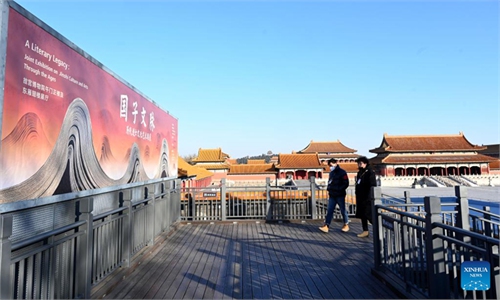ARTS / CULTURE & LEISURE
Shanghai Museum celebrates Year of the Rabbit with ancient adorable ‘bunny’ relics

Crystal Hare (Photo: Courtesy of the Shanghai Museum)
A hare-shaped zun (wine vessel) from the Western Zhou Dynasty (1046BC-771BC), a white glazed hare ornament from the Tang Dynasty (618-907), a painting titled A Lady with Three Rabbits by a renowned Qing Dynasty (1644-1911) artist… A number of rabbit-related cultural relics are currently on display at the Shanghai Museum to welcome the upcoming Year of the Rabbit.
Opened on Wednesday, Ode to Spring is showcasing seven ancient Chinese relics related to the rabbit or hare as part of the museum’s Spring Festival celebrations.
One of the exhibits, Crystal Hare, was discovered locally in Shanghai.
The 6.2-centimeter-long, 4.4-centimeter-wide hare-shaped ornament from the Yuan Dynasty (1279-1368) was unearthed in 1994 from an underground chamber in a pagoda in a Shanghai suburb.
Rabbits have been deeply loved by the Chinese people since ancient times for their smart, cute and docile nature. In Chinese myths and legends, the rabbit is a symbol of the moon and immortality, the museum noted in a press release.
According to the museum, rabbits were introduced into China as a domesticated animal during the Ming Dynasty (1368-1644), meaning that all the “rabbits,” or tuzi in Chinese, depicted in Chinese literature or artworks prior to the Ming were actually hares.
The exhibition is set to end on February 26.
Global Times



